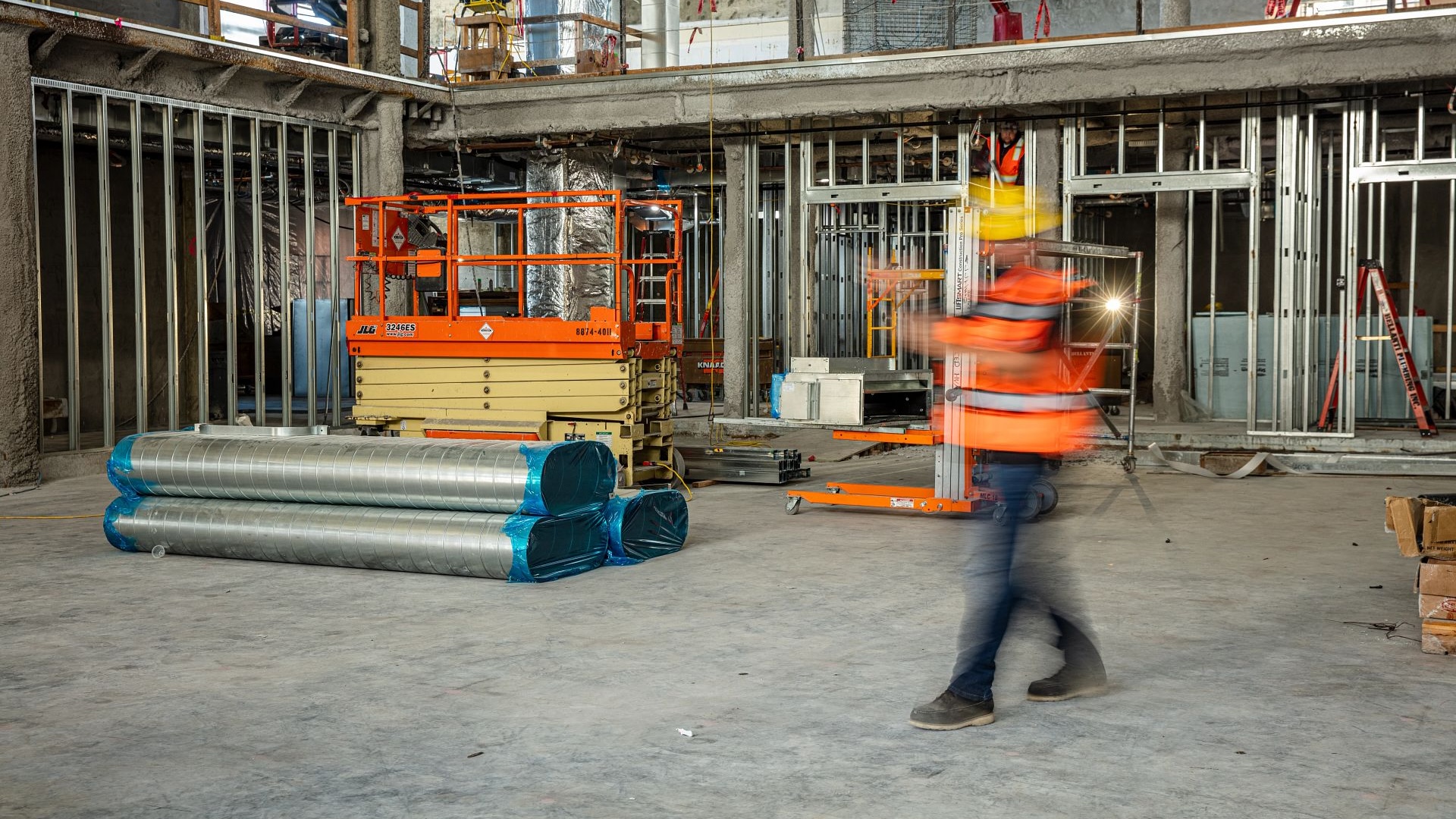Help us improve your experience. See content that is made for you!
See how IBM increased their efficiency by up to 30%!

Help us improve your experience. See content that is made for you!
See how IBM increased their efficiency by up to 30%!


Activating warning: This article discusses suicide and may be distressing to some readers.
Working in construction can be stressful. Between our shrinking workforce and increasingly compressed project timelines, the mental strain can take its toll on our people. And while a low to moderate amount of stress isn't necessarily a bad thing, too much can lead to burnout, emotional exhaustion, safety issues, and even increase risk of suicidal ideation.
With Construction Suicide Prevention Week taking place on September 9-13, it's worth looking at some sobering statistics. Consider that the construction and extraction industry is the number one occupational group for male suicides in the US, and has almost twice the suicide rate of 32 other states.
If you take all fatal work-related injuries in the construction sector and add them all together, suicide is still five times greater. We're witnessing similar stats in the UK, which sees an average of two deaths per day from construction professionals working in England and Wales alone.
Now, it's easy to move past statistics and view them as just numbers on a screen. But it's important to remember that each figure in these statistics represents a person—someone's parent, friend, co-worker.
I bring this up because construction is very much a people business. The engine, the labor, the brain power, the heart and soul of construction are in people. We are the ones who build roads, bridges, and buildings. The very space you are in right now was built by people. We need to protect and support folks from a mental health standpoint because without healthy, supported workers, the very foundation of our industry is at risk.
One of the ways to do that is to address the issue of burnout.
In this article, I discuss how burnout manifests in the construction industry, its impact on mental health, and practical steps that both individuals and organizations can take to combat it.
Eric Thomas and I discussed also this topic on the Digital Builder podcast.
Industry data shows that the construction sector has the third highest burnout among workers, indicating the significant toll the current work environment is taking on our workforce.
Several factors contribute to this.
There's the labor shortage, which puts extra pressure on existing workers to pick up the slack, leading to longer hours and increased workloads.
We have fewer people, and we have a lot of work that needs to be done. Many baby boomers are retired (or retiring soon), so a significant labor group is now out of the workforce. There are still a lot of projects, and not many people are entering construction. All of that contributes to stress among workers.
In addition, some construction professionals may find themselves in less-than-ideal working conditions. Projects aren't always 10 minutes from home. In other cases, jobs might be in another city or state, so you're away from family, friends, and your support system for long periods of time.
Adding to these pressures are issues out of the worker's control—e.g., construction supply chain management problems or unexpected delays that throw schedules into chaos.
When we are working long hours our work-life balance becomes, well, out of balance. We cannot sustain long hours and overtime indefinitely, there is a price to pay and our body and mind pay that price.
It's a challenging environment out there, so it's crucial to recognize the signs of burnout and take steps to get on the right track.
If we want to address burnout, we must first recognize the signs. Burnout is characterized by exhaustion and a lack of drive and motivation.
So, if you're feeling exhausted and helpless, saying (or thinking) things like, "I just don't have the energy anymore to go through this" or "What is the point of this?" then you could be burning out.
Burnout can also manifest in external behaviors.
External signs that people will notice in themselves is if they start getting late for work or being less attentive. There is often a rise in safety incidents, headaches or illness, sleeplessness, and pulling away from others and social events.
Internally our productivity and creativity diminishes, and the ability to solve problems becomes reduced.
These things can be dangerous because they not only affect the individual's health and well-being but also compromise job safety and efficiency. Distraction, tardiness, and absenteeism lead to physical safety issues on the job site. If someone isn't quite as sharp as they usually are, the likelihood of accidents or near misses increase.
All this to say that while burnout primarily affects the individual, it can seriously impact a person's colleagues, family, and, ultimately, the industry. This makes it all the more important to address.
If you see these signs of burnout in yourself or in others, consider taking these steps to protect your mental health.
The first step is recognition. If you spot signs of burnout, have an honest conversation with yourself. Resist the temptation to push through it. Instead, acknowledge that you're feeling stressed or overwhelmed and that those feelings are entirely valid.
The next step is to make a change. I say this to clients and students all the time: if nothing changes, nothing changes.
Identify areas in your routine or workload that you can adjust to reduce stress and promote balance.
This can be as simple as getting more physical exercise and movement in your day. Sometimes, you may need to talk to someone to shift your perspective and gain clarity into what you need to do.
It's also critical to monitor your well-being and check in with yourself regularly.
We give oil changes and tire rotations with our vehicles on a regular basis to keep them running at optimum performance. Are we doing that with our minds? Are you checking in and asking yourself:
Depending on what those answers are, it might be time to make a change.
Preventing and addressing burnout should be an organization-wide effort, and firms will be much more successful if the initiative comes from the top. If you're an executive or manager, strive to connect more with employees and cultivate better relationships.
Take an interest in your people. Ask them how they are and mean it. You don't have to be a therapist. You just have to be a good human.
If you spot behavior that's affecting their performance, take the time to understand what might be causing it and offer support. Don't get on them about being late; figure out why they're being late. They want to know that you care, so start asking those questions.
Now, not everyone wants to open up—and that's ok. In these instances, it may be better to point them to resources that can help.
If someone isn't comfortable talking to you as a manager about what's going on in their lives, let them know the resources. One of the most staggering statistics is that 46% of people don't seek help because they don't know what's available.
We can drastically improve our mental health simply by talking about it and removing the stigma that comes with these conversations.
Normalize talking about mental health. We talk about safety. We talk about stretching exercises before the job every day. What about mental health exercises—for example, checking in?
I encourage business owners and leaders to have these conversations because the more we talk about this, the more we normalize the discussion.
One of the biggest mistakes we can make is to ignore burnout—in ourselves and others. It's not hyperbolic to say this is a matter of life and death.
As mentioned above, suicide in the construction and extraction industries is the highest of any sector. So, we must prioritize mental health discussions just as we do with physical safety protocols.
In the same way that we talk about OSHA, safety, tie-offs, and harnesses, we should also talk about mental health.
If you or someone you know are having trouble coping with work-related stress, talk with someone who can help: In the United States, call 988 to reach the Suicide & Crisis Hotline or visit https://988lifeline.org/.
For those living outside the United States, you can find local resources here: https://blog.opencounseling.com/suicide-hotlines/.
Finally, if you need additional resources to share with your team—including videos, helpful links, and phone numbers, the Resources section of Construction Suicide Prevention’s website is a good place to start.

May we collect and use your data?
Learn more about the Third Party Services we use and our Privacy Statement.May we collect and use your data to tailor your experience?
Explore the benefits of a customized experience by managing your privacy settings for this site or visit our Privacy Statement to learn more about your options.